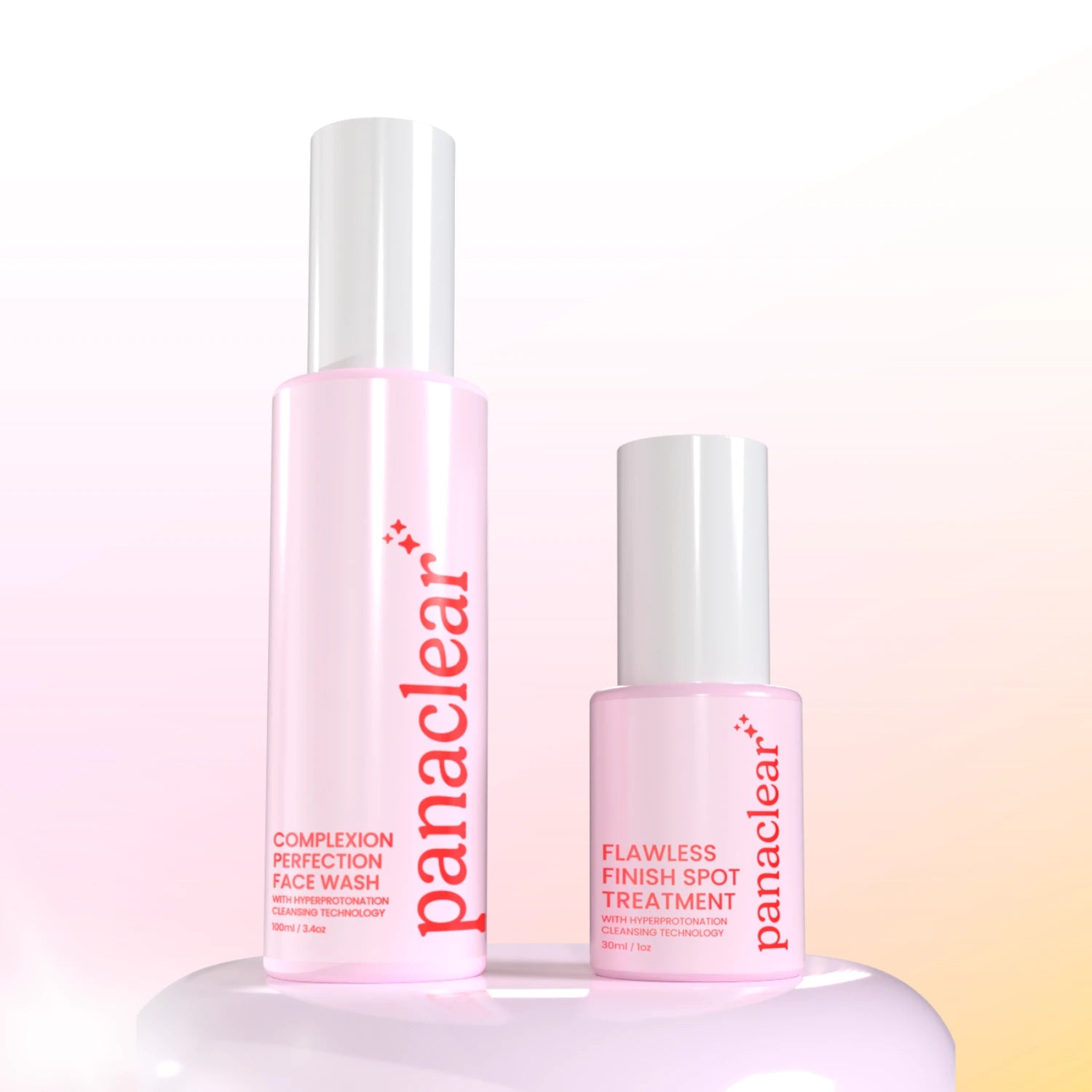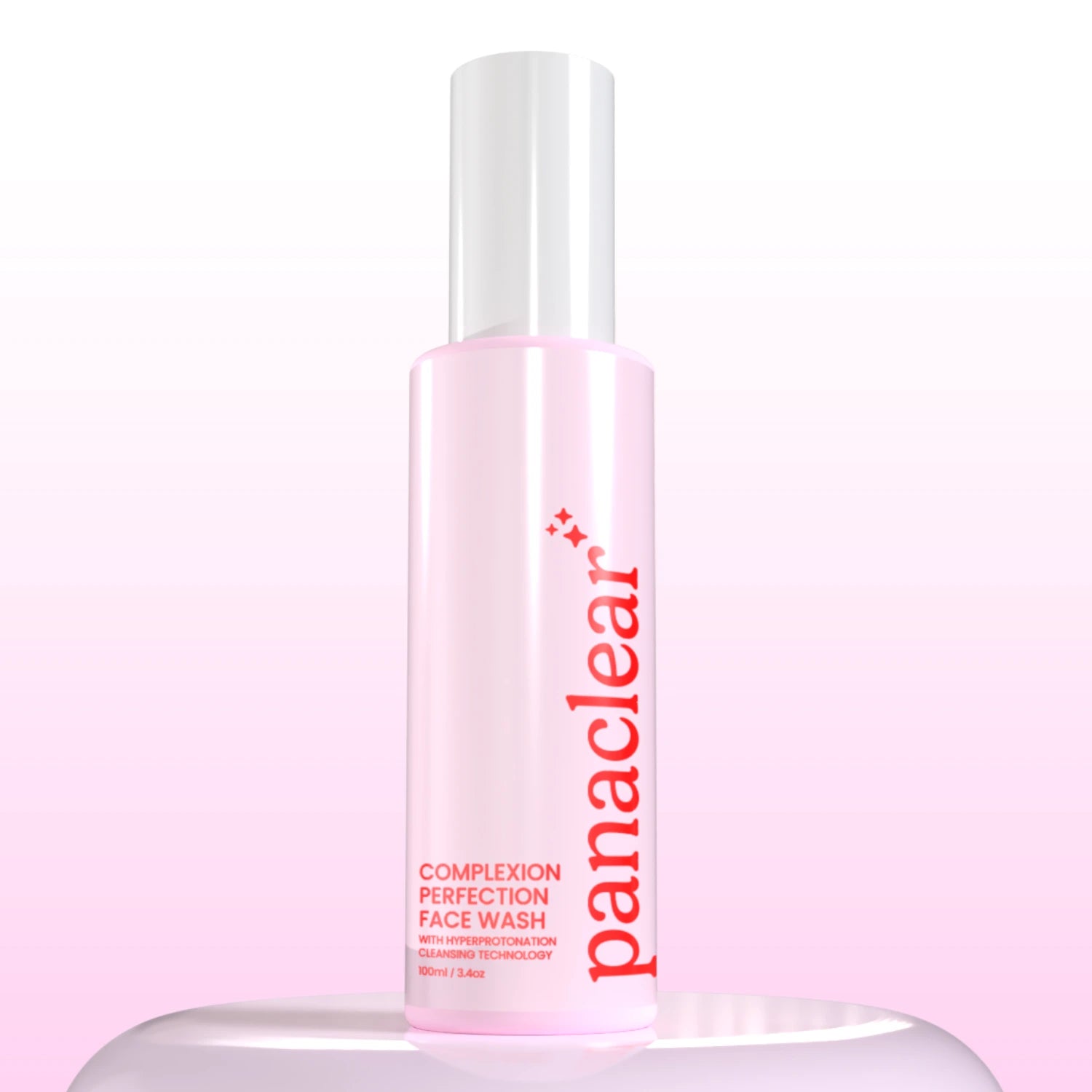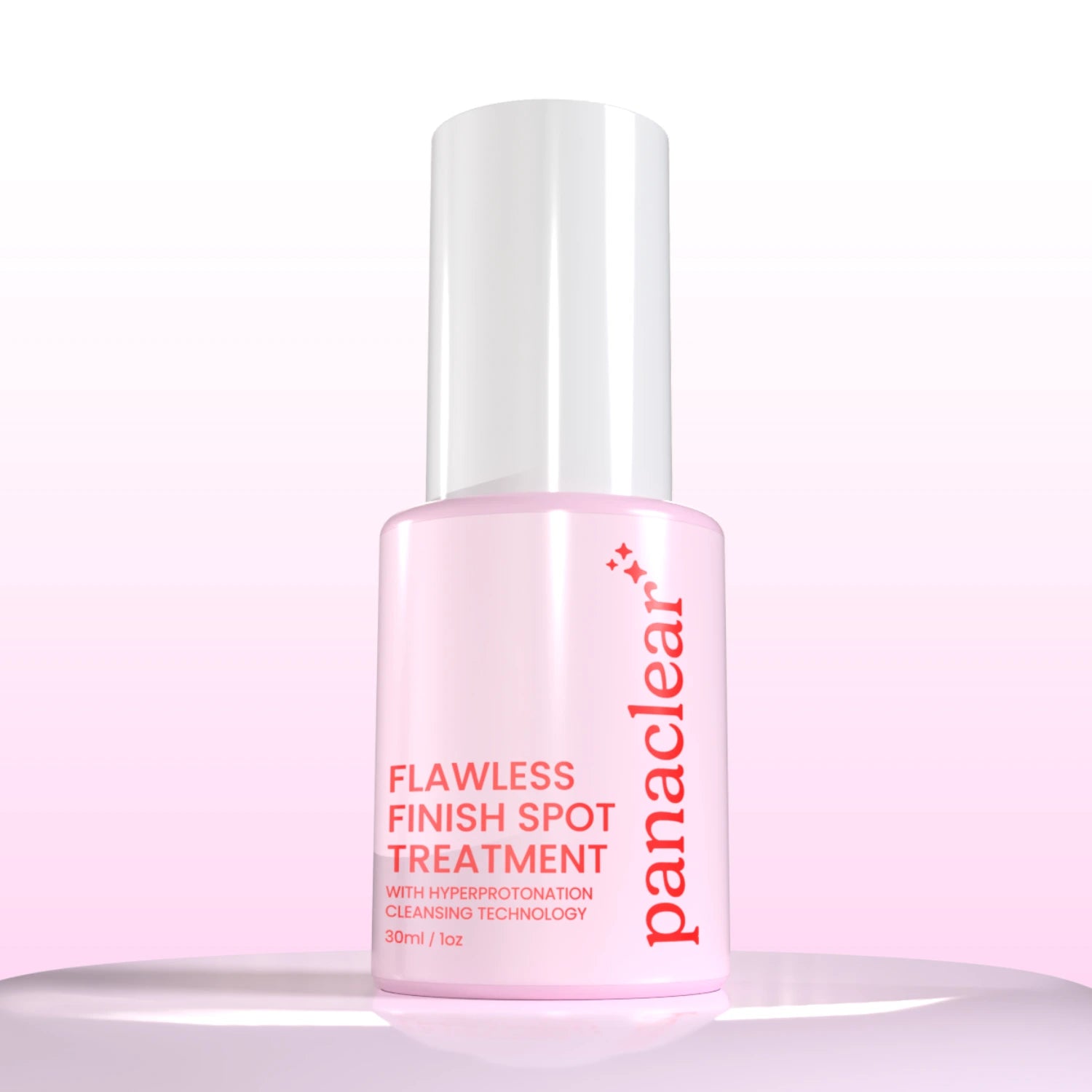Biofilm: The ‘Secret Enemy’ Of Clearer Looking Skin
Bacteria’s stickiest secret explained.

Need to Know
- Biofilms are organised bacterial communities.
- They use EPS to 'stick' together and resist attacks - including from your skincare.
- Panaclear is the first skincare line to use hyperprotonation cleansing technology to break down EPS.
The biofilm problem
You’ve tried it all. Benzoyl peroxide, salicylic acid, and every spot treatment that smells like it could power a small rocket. Maybe they helped for a while. Maybe they didn’t. But somehow, the breakouts always return.
What if the issue isn’t how many products you’re using, or how strong they are, but what you’re actually fighting?
The answer may lie in something you can’t see: a microscopic structure called biofilm, microscopic sticky communities that allow bacteria to hide in plain sight.
First, what is biofilm?

Imagine a city built for bacteria. A crowded, glue-like neighborhood where microbes live together, share information, and work together to defend themselves.
Biofilm isn’t new. It was first observed in the 1600s, but only in recent years has it become a topic of interest in skincare, and it matters a lot more than most people realize.
When bacteria settle on your skin, they begin producing a sticky substance known as extracellular polymeric substance (EPS). EPS is made up of proteins, fats, DNA, and long sugar chains known as polysaccharides that create a kind of gel-like armor for the bacteria living inside, locking them in place and shielding them from your skincare.
It’s estimated that around 80-90% of all bacteria on Earth live inside biofilm communities. Naturally, that includes the bacteria that live on our skin.
Once inside a biofilm, bacteria behave very differently from free-floating, or “planktonic,” bacteria. They:
-
Communicate with each other through chemical signals, a process called quorum sensing
-
Share resources and genetic material, including resistance genes
-
Adapt quickly to changes in their environment
-
Become much harder to kill with traditional methods that do not target biofilms or EPS specifically
This is why some blemishes seem to resist everything you try and return again and again.
In current acne research, scientists have discovered that the bacteria Cutibacterium acnes (formerly Propionibacterium acnes) can form biofilms inside hair follicles.
Many cleansers never actually reach the bacteria. They hit the surface of the biofilm, but the bacteria remain safe underneath their sticky shield.
"The method by which a seemingly harmless commensal [bacteria that normally lives on the skin without causing harm] triggers such a strong immune response has confused scientists for decades until its biofilm-forming abilities had been discovered.
From: The role of Propionibacterium acnes biofilm in acne vulgaris. https://doi.org/10.13188/2373-1044.1000029
Biofilm tends to form inside hair follicles and pores where bacteria take up residence. Once protected inside their biofilms, they become up to 5,000 times more resistant to attacks. That’s why spot treatments and cleansers can sometimes feel like they’re doing nothing… because they aren't truly working if they’re not designed to break through that sticky matrix.

So… is that why my acne keeps coming back?
Very possibly, yes.
Most traditional cleansers with ingredients like benzoyl peroxide, salicylic acid, and other harsh chemicals are designed to kill bacteria floating around, otherwise known as planktonic bacteria which isn’t encapsulated in a biofilm matrix.
""Unless you're targeting the biofilm structure before targeting the bacteria inside, it's like throwing water at a brick wall expecting it to get inside the house."
That’s why many people experience that frustrating pattern: clear → breakout → clear → breakout again and again and again. You're managing it, but not clearing the foundation that allows it to thrive in the first place.
How Panaclear approaches skincare differently
Most skincare isn’t designed to break down biofilm. Panaclear is.
At the center of our formula is an ingredient called glycerol monolaurate, also known as monolaurin. Monolaurin is a fatty acid derived from coconuts that has well-documented natural antibacterial and anti-inflammatory properties.
We combine monolaurin with citric acid and a blend of emulsifiers to trigger a cleansing process called hyperprotonation. This process was developed to physically disrupt EPS and cleanse away biofilms from the skin.
Hyperprotonation creates a more acidic, proton-rich environment that makes biofilm membranes less stable. Once that structure breaks apart, the bacteria inside lose their protection and can finally be cleared away.
In laboratory testing, this process showed remarkable results.
""[Hyperprotonation] killed 100% of bacteria... this with the log10 result assures the product will attract significant attention in health and allied industries"
Professor Steve Wesselingh, Inaugural Executive Director, SAHMRI
With Panaclear, you’ve got a cleanser that not only cleanses away dirt and oil buildup, but clears the terrain bacteria depend on to thrive.

Best Skin Ever Bundle
Biofilm-targeting cleansing duo for calmer, clearer-looking skin.
SHOP NOWRead more about the science behind Panaclear and hyperprotonation here.
It’s not just what’s on your skin. It’s what’s stuck to it.
If you’ve been stuck in the “try everything” cycle, you’re not alone. But the missing piece might not be too much dirt, oil or bacteria, it might be the biofilm that's been quietly protecting your breakouts all along.
Panaclear doesn’t just go surface-deep. We target the structure. We dismantle the system. And it’s changing the way we think about skincare for good.



